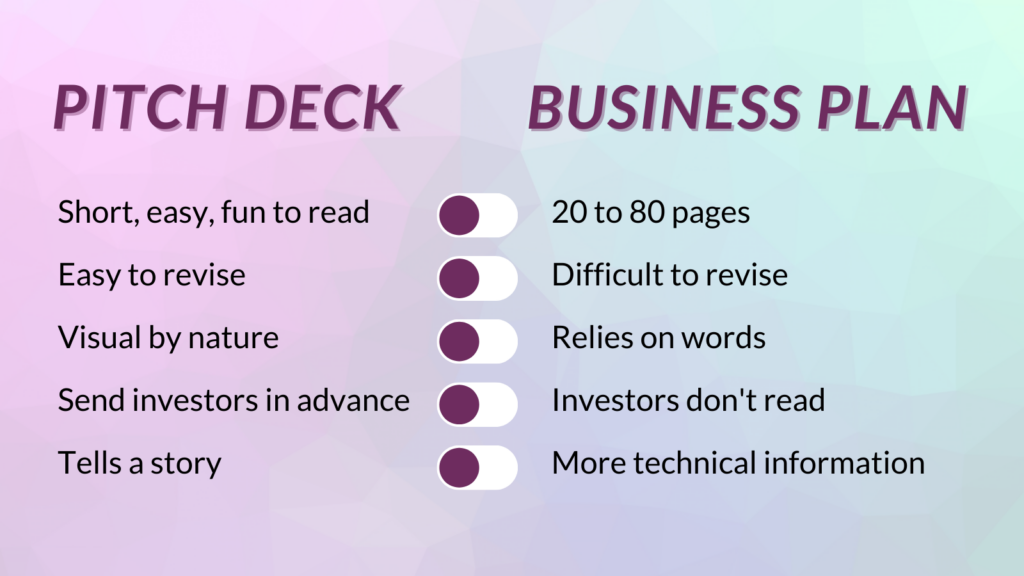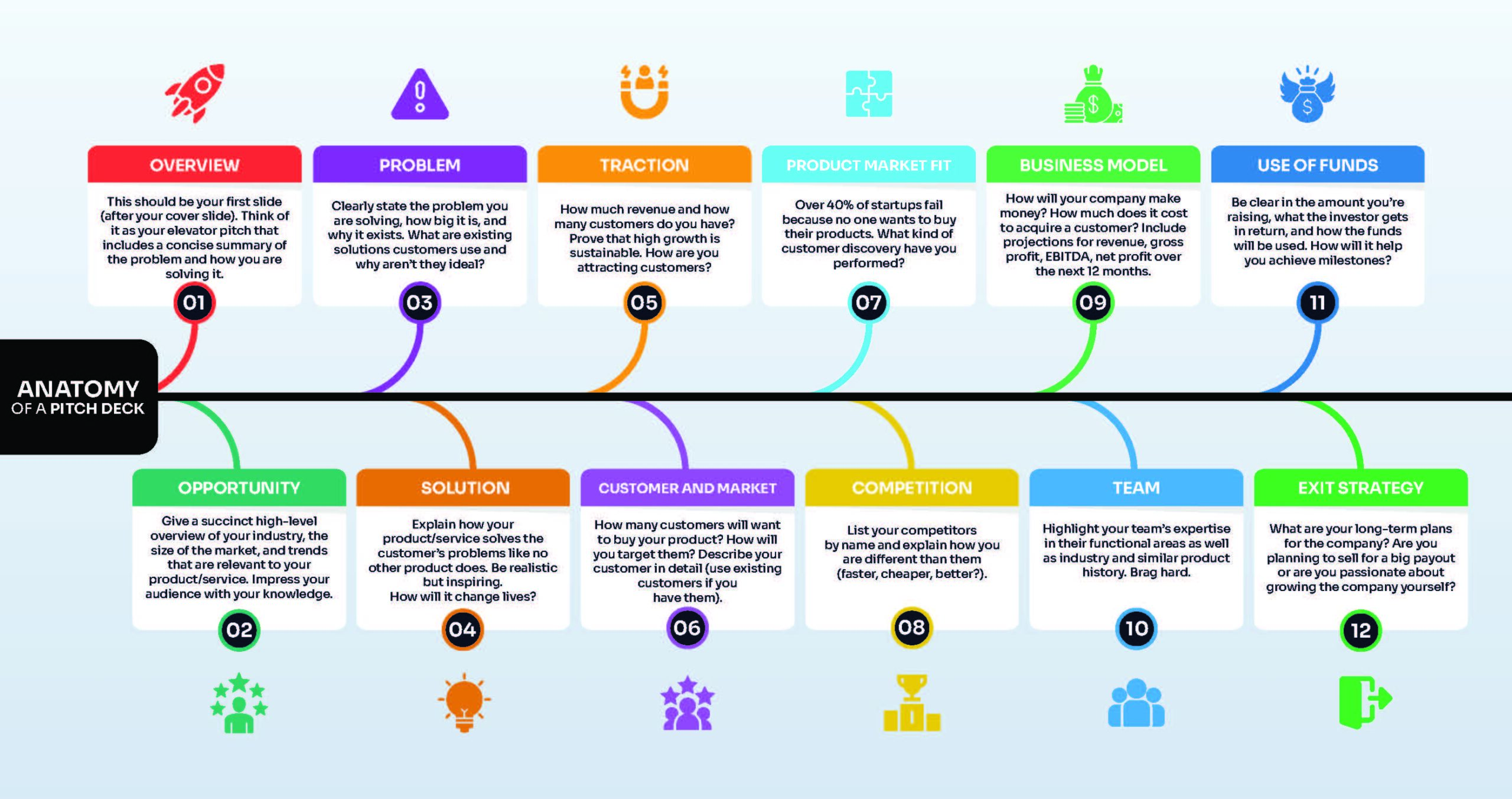Pitch deck. Investor pitch. Slide deck. Presentation deck. There are a multitude of names for the same thing: a concise written and visual presentation of your company (or future company) that explains how you will change the world, on a small or big scale. We’ll refer to it as a pitch deck here. If you are an entrepreneur building a fast-scaling product or service based around some type of technology, then you MUST have a pitch deck, but we argue that most founders will benefit from developing one regardless of your company type.
What is a Pitch Deck?
According to Get Backed, a pitch deck serves three purposes: it helps your audience understand, care, and take action. Long, written (and usually boring) business plans reigned supreme for decades until the proliferation of venture capital in the 1980s ushered in the era of tech startups. Suddenly investors had far more potential companies to review and not enough time to review all those bulky written plans (today investors spend less than 4 minutes viewing a deck). And so pitch decks were born. Today, a dialed in pitch deck, along with your Lean Canvas, is enough to map out your company’s strategy, raise money, get customers, and recruit prospective employees and board members.
Every good pitch deck must contain a few core slides that address specific topics that each investor, board member or potential employees will want to see.
What are My Core Slides?
Below are the 12 slides that every pitch deck should include. You don’t have to organize them in this exact sequence but remember that your deck needs to tell a story. It should address the problem, solution, the market you are targeting and your team, so make sure it flows in a way that makes it easy for you to tell the story.
Remember that these are the basic building blocks of your pitch deck – you can and should have additional slides, but don’t make your deck and in-person presentation too long or overwhelming. We recommend not including more than 15-20 slides in your pitch deck. After you pitch your audience should feel excited and inspired, not overwhelmed or bored. Silicon Valley based entrepreneur Guy Kawasaki evangelizes the 10/20/30 rule, which states that a presentation should have 10 slides, last no more than 20 minutes, and contain no font smaller than 30 points.
If your audience requests more information after you pitch, then you can create what’s known as a reading deck with additional “appendix” slides that provides details without you presenting it in person. Over time you will accumulate additional slides that will speak to your intended audience, so think hard about who you’re about to pitch to and imagine what questions they may have.
Pro Tips
- Remember that your pitch deck should wow your audience – convince them that your idea solves a problem and serves a market that is currently ignored
- Your audience should feel like your idea is going to succeed with or without them. Make them feel like it’s a huge opportunity to be involved.
- Show > tell. Use visuals as often as possible instead of relying on words. Layout, fonts, colors, and visuals are crucial elements to telling your story and winning your audience
- Avoid buzzwords and tired analogies. Investors review dozens of decks each month. Make yours stand out with originality.
- Your appendix slides can include anything else you need to inform your audience, including FAQs, financials, mission/vision, patents, etc.
- DocSend reports that 12% of investors read pitch decks on their phones so make sure your deck is also optimized for small screens
- Iteration is key! Show your pitch to anyone who will give you honest feedback and make changes often. You’ll never finish your pitch deck; it will continue to change as your company evolves.
We know that starting and growing a company is often a difficult process and raising money can lead to major stress. A compelling pitch deck will help you clarify your vision, the problem you’re solving, and why people should get involved to support you. It is the most important tool to help you build the relationships that will help you and your company succeed.
Additional Resources:
- Slidebean pitch deck templates with more than more than 120 fully customizable pitch deck templates from the most successful venture-backed startups
- Read the book Get Backed by Evan Baehr and Evan Loomis
- If you’re a pre-seed or seed-stage founder, Kat Weaver from Power to Pitch in Dallas will be your guide throughout the pitch and fundraising process
- Read Guy Kawasaki’s blog on the 10/20/30 rule and more on his website
- DocSend and Harvard Business School conducted research on the traits of companies that successfully raised capital. Read their insights on pitch decks.
- Read Burn the (Traditional) Business Plan! and Life Lessons from Pitching on the Sparkyard blog





